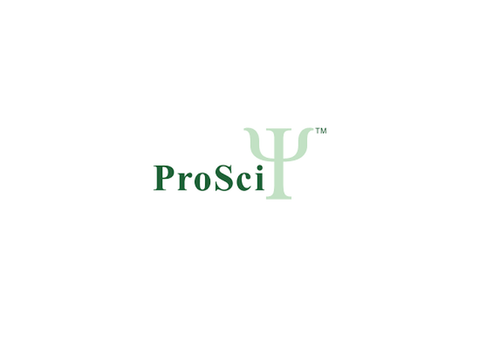Product Description
Mouse TLR2 Antibody (C-term) [APG02926G] | Leading Biology
Product Category: Polyclonal Antibodies
Host: Rabbit
Species Reactivity: M
Specificity: This Mouse TLR2 antibody is generated from rabbits immunized with a KLH conjugated synthetic peptide between 720-749 amino acids from the C-terminal region of mouse TLR2.
Cellular Localisation: Cell membrane; Single-pass type I membrane protein. Cytoplasmic vesicle, phagosome membrane; Single-pass type I membrane protein. Membrane raft {ECO:0000250|UniProtKB:O60603}. Note=Does not reside in lipid rafts before stimulation but accumulates increasingly in the raft upon the presence of the microbial ligand. In response to diacylated lipoproteins, TLR2:TLR6 heterodimers are recruited in lipid rafts, this recruitment determine the intracellular targeting to the Golgi apparatus. Triacylated lipoproteins induce the same mechanism for TLR2:TLR1 heterodimers. {ECO:0000250|UniProtKB:O60603}
Molecular Weight: 89449
Clone: Polyclonal
Gene Name: Tlr2
Gene ID: 24088
Function: Cooperates with LY96 to mediate the innate immune response to bacterial lipoproteins and other microbial cell wall components. Cooperates with TLR1 or TLR6 to mediate the innate immune response to bacterial lipoproteins or lipopeptides. Acts via MYD88 and TRAF6, leading to NF-kappa-B activation, cytokine secretion and the inflammatory response (By similarity) (PubMed:15690042) . May also promote apoptosis in response to lipoproteins (By similarity) . Forms activation clusters composed of several receptors depending on the ligand, these clusters trigger signaling from the cell surface and subsequently are targeted to the Golgi in a lipid-raft dependent pathway. Forms the cluster TLR2:TLR6:CD14:CD36 in response to diacylated lipopeptides and TLR2:TLR1:CD14 in response to triacylated lipopeptides (By similarity) . Recognizes M.tuberculosis major T-antigen EsxA (ESAT-6) which inhibits downstream MYD88-dependent signaling (PubMed:17486091) . Acts as the major receptor for M.tuberculosis lipoproteins LprA, LprG, LpqH and PhoS1 (pstS1), in conjunction with TLR1 and for some but not all lipoproteins CD14 and/or CD36. The lipoproteins act as agonists to modulate antigen presenting cell functions in response to the pathogen (PubMed:19362712) . Recombinant MPT83 from M.tuberculosis stimulates secretion of cytokines (TNF-alpha, IL-6 and IL-12p40) by mouse macrophage cell lines in a TLR2-dependent fashion, which leads to increased host innate immunity responses against the bacterium (PubMed:22174456) . Lung macrophages which express low levels of TLR2 respond poorly to stimulation by M.tuberculosis LpqH (PubMed:19362712) . Required for normal uptake of M.tuberculosis, a process that is inhibited by M.tuberculosis LppM (PubMed:27220037) . Interacts with TICAM2 (By similarity) .
Summary: Tissue Location: Detected in a macrophage cell line, smooth muscle, lung, spleen, thymus, brain and adipose tissue. Cell surface expression detected in lung alveolar macrophages, dendritic macrophages and at lower levels in lung macrophages (at protein level) (PubMed:19362712)
Form: Purified polyclonal antibody supplied in PBS with 0.09% (W/V) sodium azide. This antibody is prepared by Saturated Ammonium Sulfate (SAS) precipitation followed by dialysis against PBS.
Storage: Maintain refrigerated at 2-8°C for up to 2 weeks. For long term storage store at -20°C in small aliquots to prevent freeze-thaw cycles.
Application: WB, IHC-P-Leica
Dilution: WB--1:2000
Synonyms: Toll-like receptor 2, CD282, Tlr2
 Euro
Euro
 USD
USD
 British Pound
British Pound
 NULL
NULL

![Mouse TLR2 Antibody (C-term) [APG02926G] Mouse TLR2 Antibody (C-term) [APG02926G]](https://cdn11.bigcommerce.com/s-452hpg8iuh/images/stencil/1280x1280/products/865292/1157359/logo__92149.1659788186__15628.1659862406.png?c=2)
![Mouse TLR2 Antibody (C-term) [APG02926G] Mouse TLR2 Antibody (C-term) [APG02926G]](https://cdn11.bigcommerce.com/s-452hpg8iuh/images/stencil/100x100/products/865292/1157359/logo__92149.1659788186__15628.1659862406.png?c=2)
![Mouse TLR2 Antibody (C-term) [APG02926G] Mouse TLR2 Antibody (C-term) [APG02926G]](https://cdn11.bigcommerce.com/s-452hpg8iuh/images/stencil/500x659/products/865292/1157359/logo__92149.1659788186__15628.1659862406.png?c=2)

![TLR2 Antibody (N-term) [APR10968G] TLR2 Antibody (N-term) [APR10968G]](https://cdn11.bigcommerce.com/s-452hpg8iuh/images/stencil/500x659/products/865291/1157358/logo__92149.1659788186__16063.1659862405.png?c=2)

![Mouse MOGT2 Antibody (C-term) [APR17433G] Mouse MOGT2 Antibody (C-term) [APR17433G]](https://cdn11.bigcommerce.com/s-452hpg8iuh/images/stencil/500x659/products/864070/1156137/logo__92149.1659788186__02902.1659860020.png?c=2)
![Mouse Frk Antibody (C-term) [APR04787G] Mouse Frk Antibody (C-term) [APR04787G]](https://cdn11.bigcommerce.com/s-452hpg8iuh/images/stencil/500x659/products/869745/1161812/logo__92149.1659788186__50409.1659865885.png?c=2)